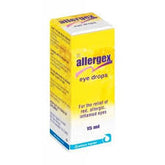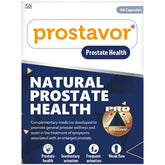Food colours and hyperactivity
The potential link between food colours and hyperactivity in children has been a topic of considerable debate and research. Concerns have been raised that certain artificial food colours may exacerbate or trigger hyperactive behaviour. This comprehensive guide explores the relationship between food colours and hyperactivity, reviewing current research, potential mechanisms, and practical advice for parents and caregivers.
What Are Food Colours?
Food colours, also known as food dyes, are substances used to add or enhance the colour of food and beverages. They can be natural or artificial. Artificial food colours are synthesized from chemicals, whereas natural food colours are derived from plants, animals, or minerals.
Common Artificial Food Colours
Some of the most commonly used artificial food colours include:
- Red 40 (Allura Red)
- Yellow 5 (Tartrazine)
- Yellow 6 (Sunset Yellow)
- Blue 1 (Brilliant Blue)
- Blue 2 (Indigo Carmine)
- Green 3 (Fast Green)
- Red 3 (Erythrosine)
Hyperactivity
Hyperactivity is characterized by excessive movement, impulsivity, and difficulty in maintaining attention. It is a hallmark symptom of Attention-Deficit/Hyperactivity Disorder (ADHD), a common neurodevelopmental disorder in children.
The Research: Food Colours and Hyperactivity
Research into the connection between food colours and hyperactivity has yielded mixed results. Key studies include:
-
Feingold Hypothesis (1970s): Dr. Benjamin Feingold proposed that artificial food colours and certain preservatives could cause hyperactivity in children. This led to the popularization of the Feingold Diet, which eliminates artificial colours and preservatives.
-
Southampton Study (2007): A study funded by the UK Food Standards Agency found that a mix of certain artificial food colours and the preservative sodium benzoate increased hyperactivity in some children. This study prompted the European Union to require warning labels on foods containing these additives.
-
Meta-Analyses and Reviews: Reviews of multiple studies have suggested that artificial food colours may have a small but significant impact on hyperactivity in some children, particularly those already diagnosed with ADHD.
Potential Mechanisms
The exact mechanisms by which food colours might influence hyperactivity are not fully understood, but several theories have been proposed:
-
Neurochemical Effects: Some studies suggest that artificial food colours may alter neurotransmitter levels in the brain, affecting behaviour and attention.
-
Immune Response: Another hypothesis is that food colours might trigger an immune response, leading to behavioural changes.
-
Placebo Effect: In some cases, the belief that food colours cause hyperactivity may influence parents' and children's perceptions and behaviours.
Practical Advice for Parents and Caregivers
If you suspect that food colours may be affecting your child's behaviour, consider the following steps:
-
Read Labels Carefully: Check food labels for artificial colours and avoid products that contain them.
-
Choose Natural Alternatives: Opt for foods that use natural colours derived from fruits, vegetables, and other natural sources.
-
Elimination Diet: Try an elimination diet under the guidance of a healthcare professional to determine if removing artificial colours improves your child's behaviour.
-
Monitor Behaviour: Keep a diary of your child's diet and behaviour to identify any correlations between food consumption and hyperactivity.
-
Consult a Professional: Speak with a pediatrician or a dietitian for personalized advice and to rule out other potential causes of hyperactivity.
Conclusion
While the link between food colours and hyperactivity remains a topic of debate, some evidence suggests that artificial food colours may exacerbate hyperactive behaviour in certain children. By being vigilant about food choices and monitoring behaviour, parents and caregivers can help manage potential impacts on their child's health and well-being.
In summary, understanding the potential effects of artificial food colours on hyperactivity can help parents make informed dietary choices for their children. While not all children are affected by these additives, those who are may benefit from reducing or eliminating artificial colours from their diet.
For parents concerned about hyperactivity, paying close attention to food labels and choosing natural food options can be beneficial. Working with healthcare professionals to identify and manage food-related behaviour changes ensures a balanced and healthy approach to your child's diet and well-being.
- Complication of Food colours and hyperactivity
- Diagnosis of Food colours and hyperactivity
- Food colours and hyperactivity
- Food colours and hyperactivity myths
- How is Food colours and hyperactivity treated?
- Medicine for Food colours and hyperactivity
- Remedies for Food colours and hyperactivity
- Support for Food colours and hyperactivity
- Symptoms associated with Food colours and hyperactivity
- The best British Online Pharmacy
- Top 10 UK Pharmacies
- Treatment for Food colours and hyperactivity
- What causes Food colours and hyperactivity
- What is Food colours and hyperactivity
- Where can I buy medicine for Food colours and hyperactivity in the UK
- ZimSeller Pharmacy



















